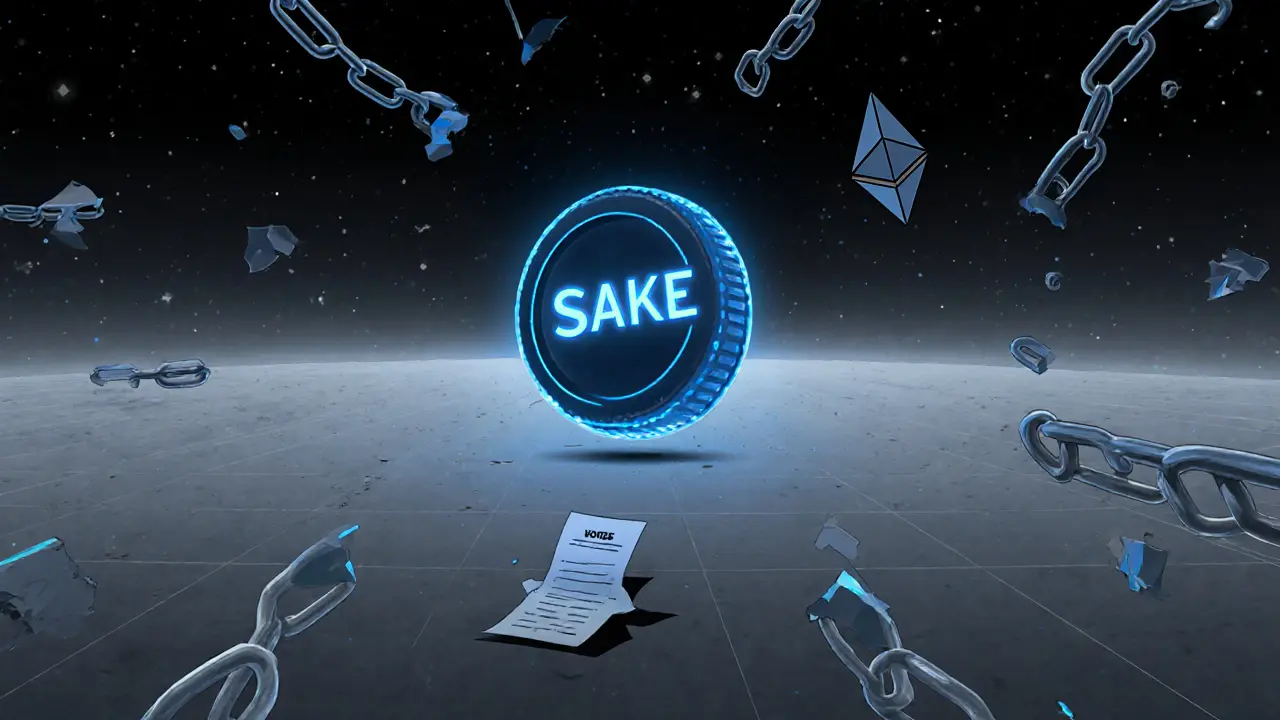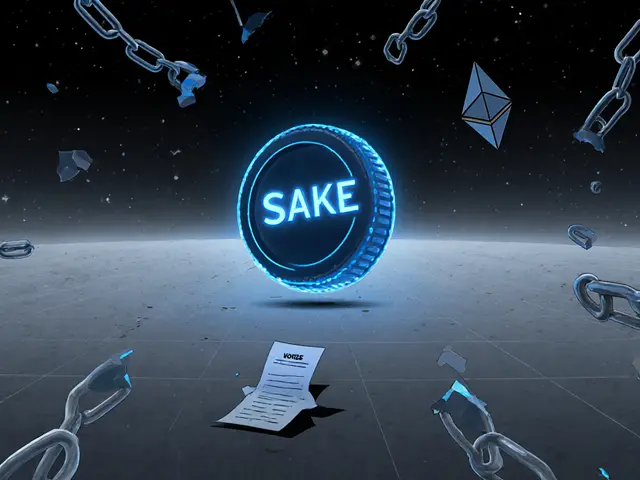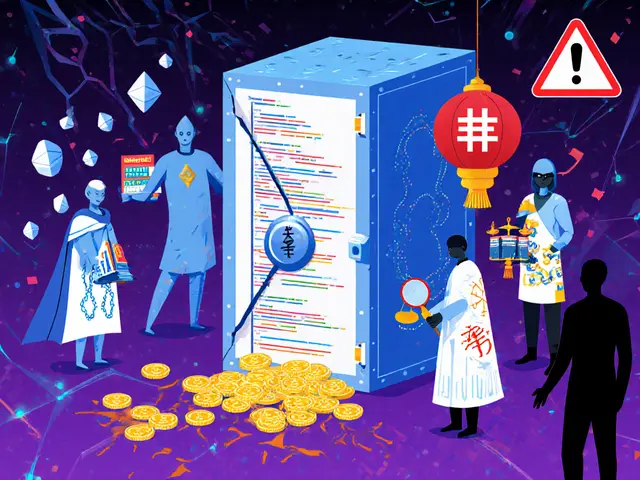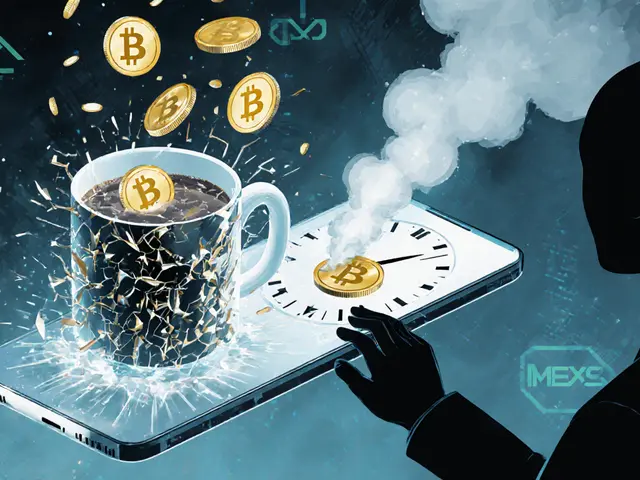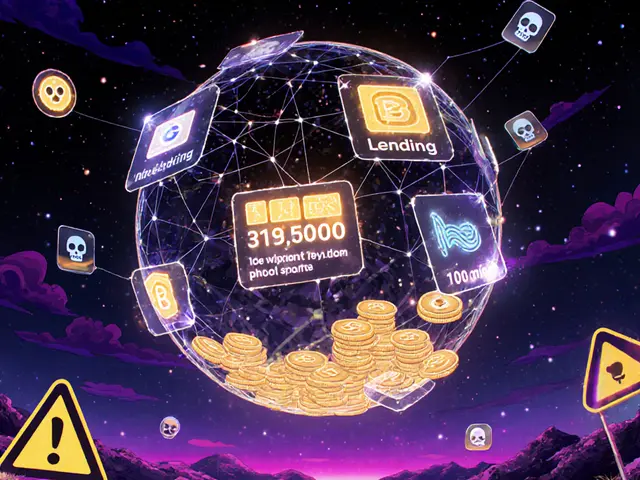SAKE Token Risk Calculator
Calculate Your SAKE Trade Risk
Trade Analysis
Key Risk Factors
- Current Market Cap: $142,100
- 24h Volume: $10,270
- Slippage Range: 12-15%
- Active Holders: 1,842
The article states that SAKE has extremely low liquidity with daily trading volume under $11,000, making it highly susceptible to slippage. With only 1,842 active holders, there's limited market depth. These factors create significant risk for potential buyers.
When you hear "SakeToken (SAKE)" mentioned in crypto circles, it’s not the next Bitcoin. It’s not even the next Uniswap or PancakeSwap. It’s something quieter, smaller, and far riskier - a micro-cap token with a market cap under $150,000 and daily trading volume under $11,000. If you’re wondering whether SAKE is worth your time, the answer isn’t about potential. It’s about reality.
What Exactly Is SakeToken (SAKE)?
SakeToken is a decentralized finance (DeFi) token built on the Ethereum blockchain as an ERC-20 standard. It was created to let users participate in governance and earn rewards by providing liquidity or staking their tokens within a niche DeFi ecosystem. Unlike big DeFi projects that have apps, dashboards, and user bases in the millions, SakeToken operates with almost no infrastructure. There’s no official website. No mobile app. No customer support. Just a smart contract on Ethereum with the address 0x066798d9ef0833ccc719076dab77199ecbd178b0.
Its main purpose? To give holders voting rights on future protocol changes. That’s it. No staking rewards beyond basic token incentives. No cross-chain bridges. No partnerships. Just governance - and even that’s mostly theoretical, since so few people hold the token.
How Does SAKE Work?
As an ERC-20 token, SAKE works just like any other Ethereum-based asset. You need an Ethereum wallet - MetaMask, Trust Wallet, or Ledger - to store it. You add the contract address manually, then you can buy, sell, or hold it. But here’s the catch: because liquidity is so thin, trading SAKE is messy.
On decentralized exchanges like Uniswap, where SAKE is listed, you’ll likely face 12-15% slippage on trades under $100. That means if you try to buy $50 worth of SAKE, you might end up paying $56 because the pool doesn’t have enough depth to fill your order without dragging the price up. One Reddit user reported losing $7.50 in slippage on a $50 trade. That’s not a fee - that’s a hidden tax.
The token’s total supply is about 136 million SAKE, but only around 102 million are in circulation. The rest are locked or reserved, though no official vesting schedule exists. There’s no clear explanation of what happens to the remaining tokens. Are they for future development? For team allocation? No one’s saying.
Current Price and Market Stats (November 2025)
As of November 24, 2025, SakeToken’s price hovered between $0.0012 and $0.0014. CoinDesk reported $0.0012, CoinLore said $0.00139, and TradingView showed $0.0013893. The difference isn’t huge - but the volume tells the real story.
- Market cap: ~$142,100
- 24-hour trading volume: ~$10,270
- Coins traded daily: ~6.7 million
- Active wallet holders: 1,842
- Daily transactions: 287
Compare that to Uniswap (UNI), which trades over $300 million daily. SAKE’s entire market cap is less than 0.003% of UNI’s daily volume. It’s not a competitor - it’s a footnote.
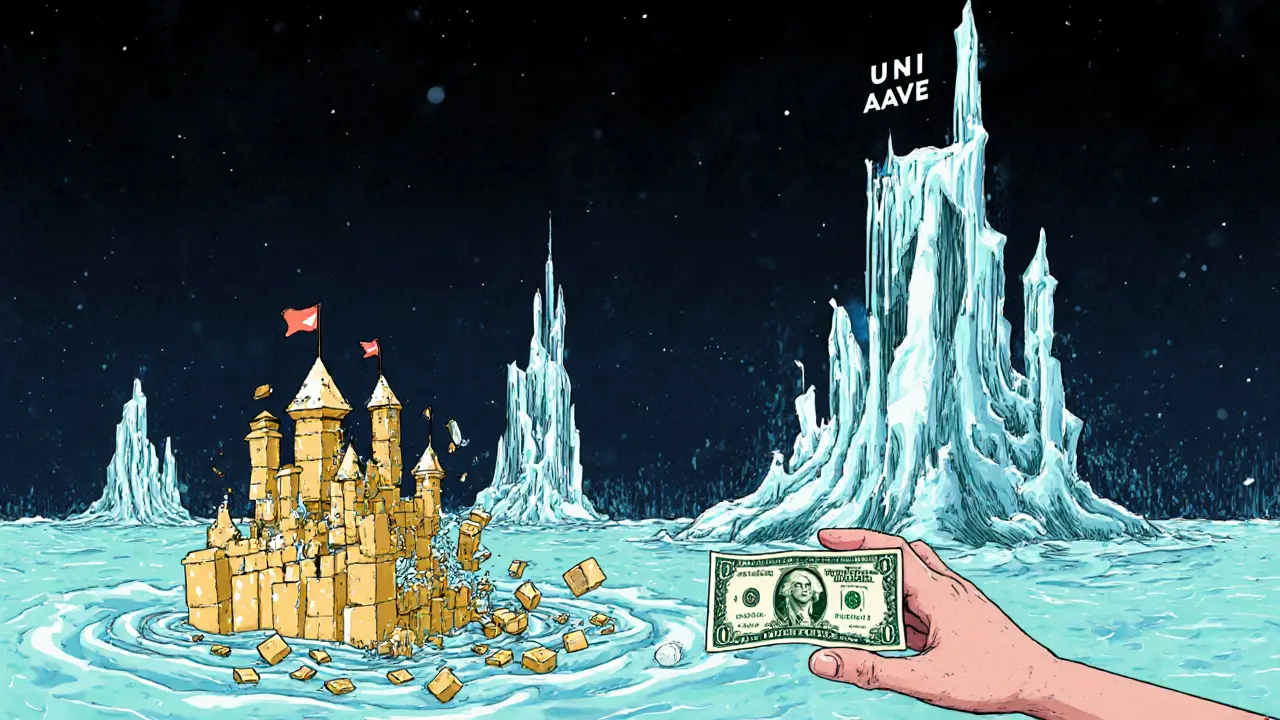
Why Does SAKE Even Exist?
Some crypto projects are built to solve real problems. Others are built because someone had an idea and a smart contract editor.
SakeToken falls into the second category. It claims to enable a "multi-chain ecosystem," but there’s no evidence of any cross-chain functionality. It says it uses a "hybrid proof-of-stake" system, but since it’s an ERC-20 token on Ethereum, it inherits Ethereum’s consensus - there’s no separate staking mechanism. The whitepaper? Nonexistent. The roadmap? Last updated in Q2 2025 - and nothing’s happened since.
What it does have is a governance model. In theory, SAKE holders vote on upgrades. In practice, fewer than 500 people are even active in its Discord or Telegram groups. Most votes are cast by a handful of wallets. That’s not decentralization - that’s a ghost town with a voting box.
Who’s Buying SAKE? And Why?
There are two kinds of people buying SakeToken right now:
- Speculators chasing moonshots - They see a token trading at $0.0013 and think, "If it hits $0.10, I’ll make 75x!" They ignore the fact that a 75x move would require a $10.6 billion market cap. That’s bigger than Ripple or Solana. It’s not realistic.
- Curious newcomers - They find SAKE on CoinGecko, see "DeFi" and "Ethereum," assume it’s legitimate, and buy it without checking liquidity or community size. They’re often the ones who later complain they can’t sell.
There’s no evidence of institutional interest, no venture capital backing, and no exchange listings beyond tiny DEXs. It’s not listed on Binance, Coinbase, Kraken, or KuCoin. You can’t buy it with a credit card. You can’t store it in a mainstream wallet without manually adding the contract. It’s not user-friendly - it’s a technical obstacle.
The Real Risks of Holding SAKE
Here’s what you’re actually risking when you hold SakeToken:
- Liquidity risk - You might not be able to sell when you want to. Low volume means no buyers.
- Slippage risk - Even small trades can cost you 15% before you even count fees.
- Development risk - No team updates. No code commits. No announcements. The project is dormant.
- Scam risk - With no official website, no social media presence, and no team disclosure, there’s no accountability. If the devs abandon it tomorrow, your tokens become digital paper.
- Regulatory risk - While no action has been taken, utility tokens with governance rights and no clear use case are often flagged by regulators as unregistered securities.
And here’s the kicker: if you bought SAKE at its 2025 high of $0.0035, you’ve lost 80% of your value. That’s not a dip. That’s a collapse.
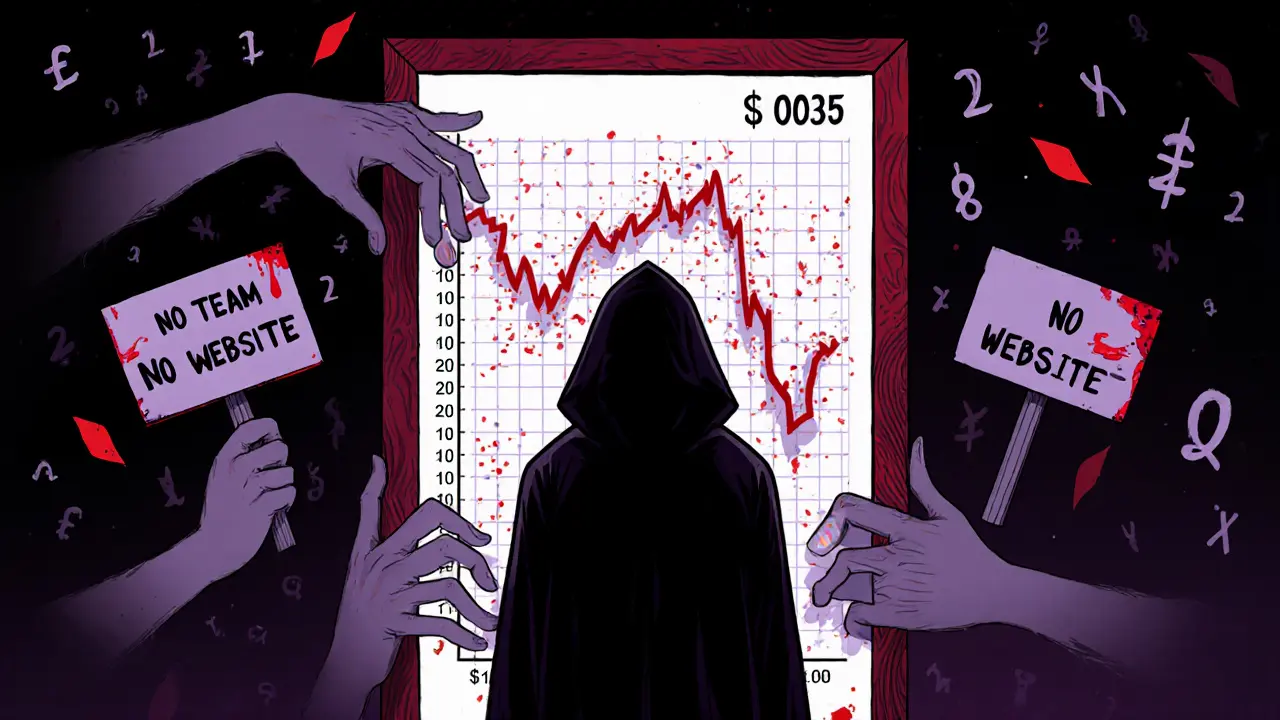
How Does SAKE Compare to Other DeFi Tokens?
Let’s put SAKE next to some real DeFi players:
| Token | Market Cap (Nov 2025) | 24h Volume | Active Holders | Exchange Listings | Team Transparency |
|---|---|---|---|---|---|
| SakeToken (SAKE) | $142,100 | $10,270 | 1,842 | 2 DEXs only | None |
| Uniswap (UNI) | $4.8B | $300M+ | 300,000+ | 50+ exchanges | Public team, active updates |
| PancakeSwap (CAKE) | $1.2B | $150M+ | 200,000+ | 40+ exchanges | Public team, weekly updates |
| Aave (AAVE) | $1.7B | $80M+ | 150,000+ | 60+ exchanges | Public team, quarterly roadmaps |
SAKE doesn’t just lose - it’s in a different league entirely. The other tokens have teams, users, liquidity, and infrastructure. SAKE has a contract address and a dream.
Should You Buy SakeToken?
If you’re looking to build wealth, no - don’t buy SAKE.
If you’re looking to learn how DeFi tokens work, maybe. But even then, you’d be better off buying $5 of UNI or AAVE and seeing how governance actually works in a real ecosystem.
If you’re gambling, and you understand that you might lose everything - then go ahead. But don’t call it an investment. Call it a lottery ticket with extra steps.
The only scenario where SAKE makes sense is if you’re a researcher studying micro-cap token behavior - or if you’re writing an article about crypto dead ends. In both cases, you’re not holding it to profit. You’re holding it to observe.
Final Thoughts
SakeToken isn’t a failure. It’s a warning.
It shows how easy it is to create a token, slap on the word "DeFi," and call it a project. But without liquidity, without users, without transparency, and without development - it’s just a number on a screen. A ghost in the machine.
There are thousands of tokens like SAKE. Most vanish within a year. A few get bought by speculators who think they’ve found the next gem. The rest? They disappear quietly, leaving behind a trail of confused wallets and lost money.
If you’re thinking about SAKE, ask yourself: Am I buying a token - or am I buying a gamble with no odds in my favor?
The answer isn’t in the price chart. It’s in the silence.
